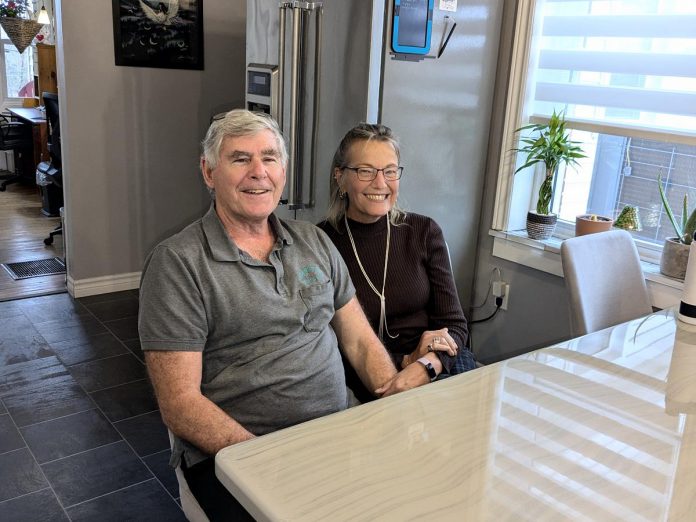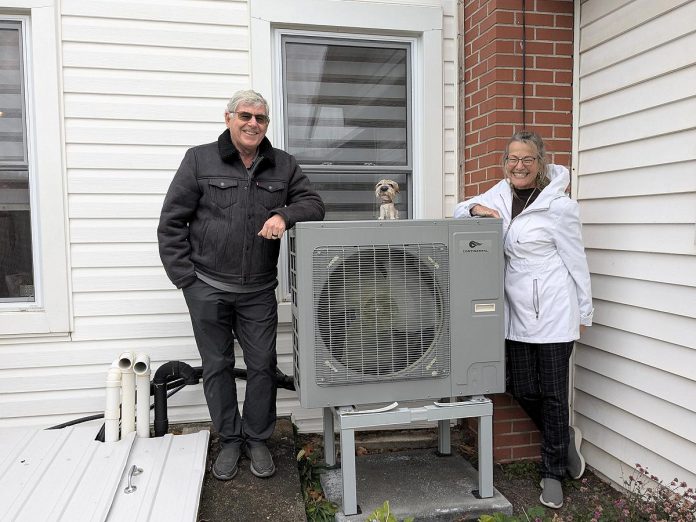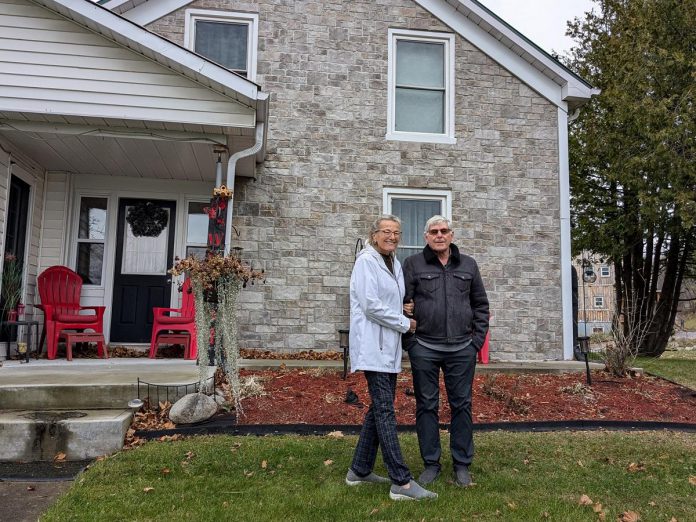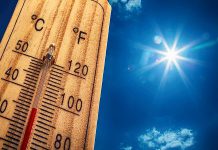
When Rick and Annie Lochhead realized their 19-year-old natural gas furnace had given up in early 2023, it was their trusted HVAC technician Joe Teatro who suggested they consider replacing it with a heat pump-furnace combination.
An air source heat pump is a great option for many homes when upgrading a furnace or air conditioner.
It’s a highly efficient heating and cooling system that runs on electricity, lowering greenhouse gas emissions and, in many cases, energy bills as well.
The Lochheads purchased their Norwood home from Rick’s father in 2004. The home was originally built in 1890, and they have done some extensive upgrades to it over the years, ripping off the old stucco and re-insulating most of the exterior walls.
Despite these upgrades, when they got an energy assessment done to apply for a heat pump rebate available at the time, they discovered an interesting surprise.
“I never knew the air leakage was that bad,” says Rick. “During the blower door test, the advisor found leakage happening all over the second floor. I had a pretty good idea where it was coming from, I just didn’t know it was that big of a problem.”

In addition to putting in the heat pump, the Lochheads ended up removing an old chimney on the upper floor, and sealing it off both upstairs and in the basement. They also sealed the wood floors on the second floor.
This, along with re-insulating one more exterior wall that had been missed the first time around, resulted in an impressive 44 per cent reduction in air leakage in their home.
Bryn Magee, the GreenUP energy advisor who performed this assessment, is an expert in identifying sources of air leakage which can be the largest cause of energy waste in many homes, particularly older ones.
He highlights one of the issues found in the Lochhead home, which he has encountered in many other homes as well.
“Older homes built with lath and plaster have a common problem,” Magee explains.
“Air leakage occurs where the floor joists on the second floor connect to the exterior wall structure. If the floorboards on the second floor have a gap between them, the air enters the room and develops drafts. Applying wood filler in the gaps of the wood floor will reduce the air flow into the room.”

The Lochheads have been pleased with their bills since completing their upgrades.
“It’s a bit hard to tell, because the electricity has gone up a bit with the heat pump, but the gas has gone way down,” says Rick. “I think overall we’re saving about $50 per month.”
Their results, based on the data collected during their EnerGuide assessments, are very impressive. The Lochheads reduced their total energy consumption by 43 per cent, going from 212 gigajoules per year to only 121 gigajoules (a gigajoules is a unit that incorporates both gas and electricity energy use).
They also reduced their greenhouse gas emissions by a staggering 6.2 tonnes per year — a 64 per cent reduction.
Improving airtightness is one of the most cost-effective ways to improve a home’s energy efficiency, and will lower heating bills no matter the heating system. Sealing off leaks will ensure that heat isn’t escaping to the outdoors (as well as preventing critters from getting in).
Blower door testing is the best way to get a measure of how leaky a home is now, and to discover where it’s losing heat. In many cases, the required air sealing can be a do-it-yourself job.
GreenUP provides a range of home energy services, including blower door testing. Visit our website at greenup.on.ca/home-energy/ for more information.


























